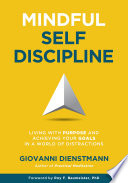

Self-discipline is often perceived as a rigid and punitive approach to achieving goals. However, the book redefines self-discipline as a practice that is rooted in mindfulness and self-awareness. It emphasizes that true self-discipline is not about forcing oneself to adhere to rules but about cultivating a deeper understanding of one’s motivations, values, and long-term aspirations. The author argues that by aligning daily actions with core values, individuals can create a sustainable practice of self-discipline that leads to fulfillment and personal growth. This shift in perspective encourages readers to approach self-discipline with compassion and curiosity rather than judgment.
Continue readingMindfulness plays a crucial role in developing self-discipline. The book highlights how being present and aware of one’s thoughts and feelings can help individuals make conscious choices rather than reactive ones. Mindfulness allows for better emotional regulation, which is essential for resisting temptations and distractions. By practicing mindfulness, individuals can observe their impulses without acting on them, leading to more intentional decision-making. The author provides various mindfulness techniques, such as meditation and breathing exercises, to help readers cultivate this awareness, enabling them to respond to challenges with clarity and purpose.
Continue readingThe book stresses the importance of setting meaningful and aligned goals as a foundation for self-discipline. Instead of pursuing superficial or externally imposed goals, readers are encouraged to identify what truly matters to them. This process involves introspection and reflection on personal values, passions, and long-term aspirations. By establishing goals that resonate on a deeper level, individuals are more likely to stay committed and motivated. The author offers a framework for goal-setting that includes specific, measurable, achievable, relevant, and time-bound (SMART) criteria, while also integrating a values-based approach to ensure that goals are fulfilling and motivating.
Continue readingResilience is a key component of self-discipline. The book discusses how setbacks and challenges are inevitable on the journey toward personal growth. Developing resilience allows individuals to bounce back from failures and maintain their commitment to their goals. The author emphasizes the importance of viewing obstacles as opportunities for learning and growth rather than as reasons to give up. Strategies for building resilience include cultivating a growth mindset, practicing self-compassion, and developing problem-solving skills. By fostering resilience, readers can enhance their ability to persevere through difficulties and remain focused on their aspirations.
Continue readingHabits play a significant role in self-discipline. The book outlines the process of habit formation and how individuals can create supportive routines that align with their goals. The author explains the habit loop—cue, routine, reward—and how understanding this cycle can help individuals design habits that foster discipline. By intentionally creating positive habits and breaking negative ones, readers can automate behaviors that support their goals. The book provides practical tips for habit formation, such as starting small, tracking progress, and using accountability partners to reinforce commitment and consistency.
Continue readingReflection is a vital practice for enhancing self-discipline. The book encourages readers to regularly assess their progress, evaluate their goals, and reflect on their experiences. This process of introspection allows individuals to identify patterns, understand their motivations, and make necessary adjustments to their approach. The author suggests incorporating regular reflection sessions into one’s routine, whether through journaling, meditation, or discussions with trusted friends or mentors. By making reflection a habit, readers can gain valuable insights that inform their journey and help them stay aligned with their values and goals.
Continue readingThe environment in which individuals operate significantly influences their ability to practice self-discipline. The book discusses the importance of creating a supportive environment that minimizes distractions and fosters focus. This includes both physical spaces and social circles. The author encourages readers to identify and eliminate negative influences, whether they are clutter, toxic relationships, or time-wasting activities. Additionally, the book emphasizes the value of surrounding oneself with supportive individuals who inspire and motivate. By intentionally curating one’s environment, readers can enhance their capacity for self-discipline and create conditions conducive to success.
Continue reading